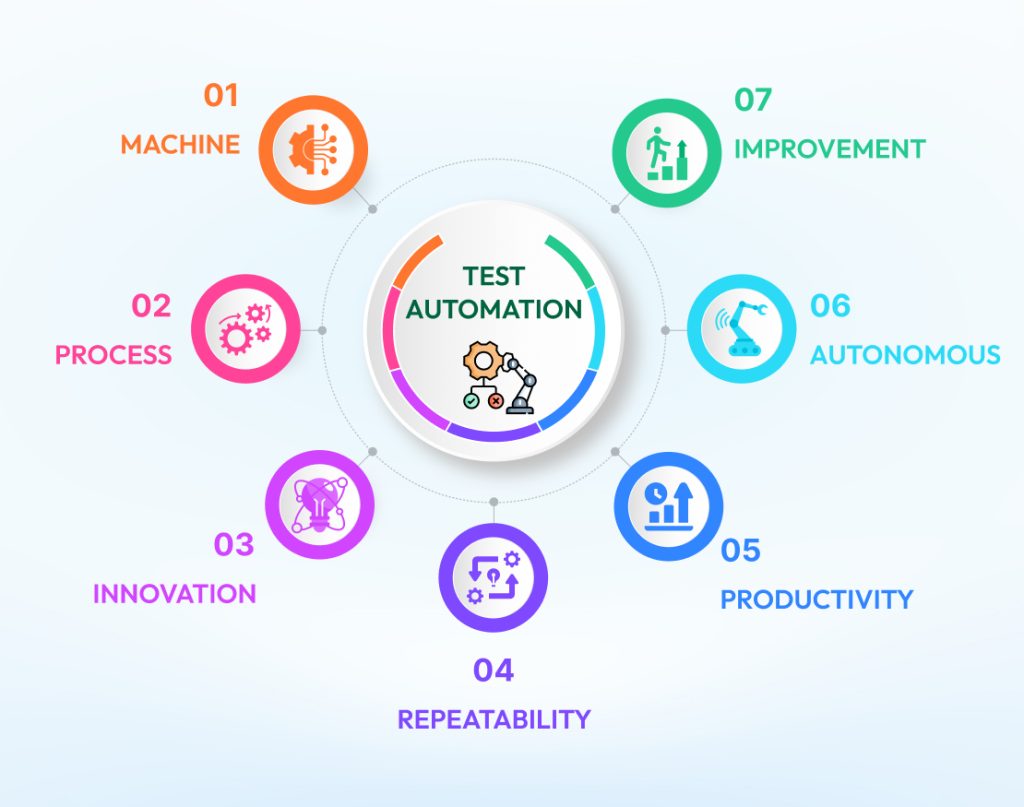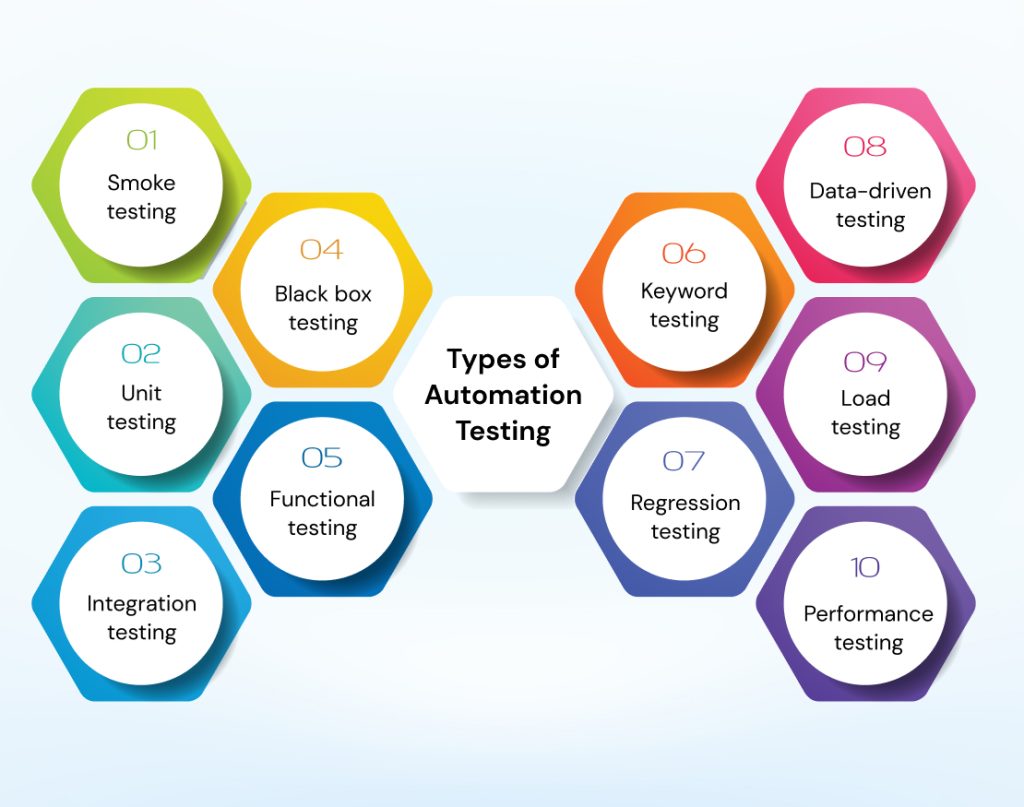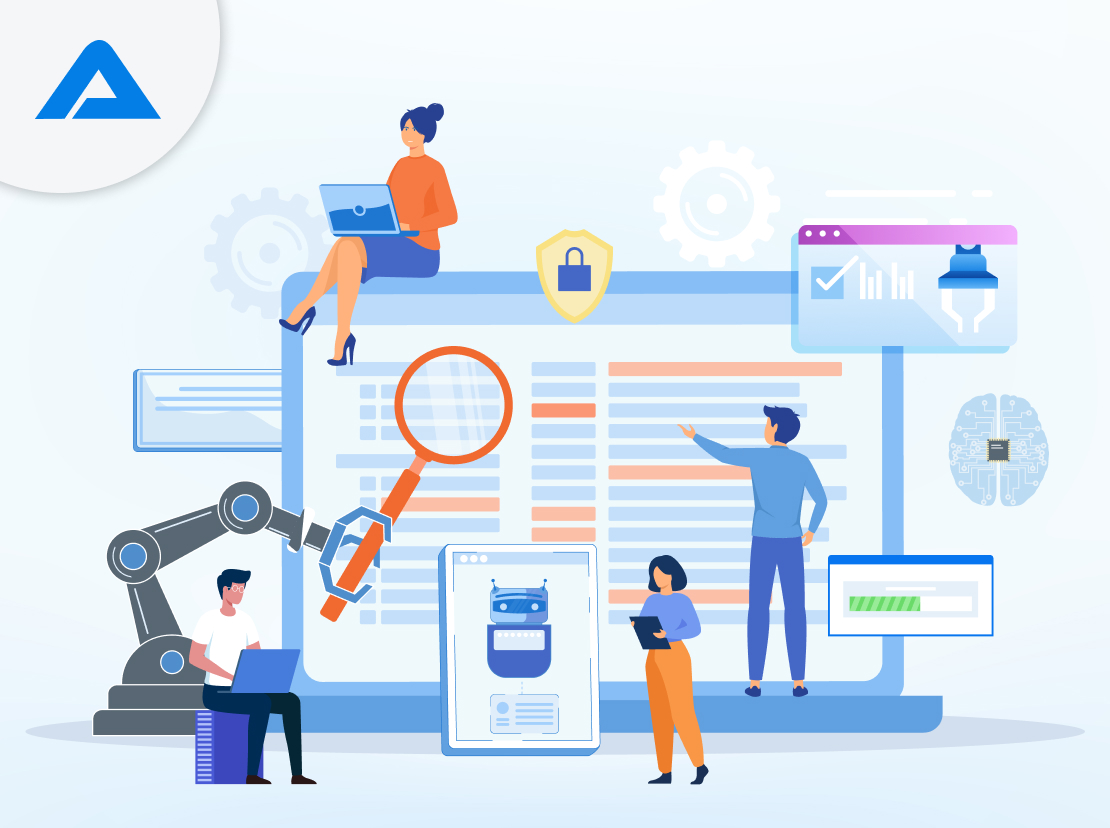The software development industry is on a constant trajectory to grow and reach a whopping USD 305+ billion in value in 2025 as more businesses begin to use software programs and apps to run their business.
While developing an app is perhaps the most challenging aspect of the entire software development lifecycle, we think quality assurance is the most important as an automation testing company.
If you are a business looking to create an app for your business or to take your services to the market, along with development, quality assurance is one area you must focus on. In doing so, you will come across automation testing multiple times.
In this blog, we talk about automation testing and everything there is to know about it.
What is automation testing?
Automation testing refers to using specialized software tools and scripts to perform tests on software applications. It involves the creation and execution of test cases and scripts.
These test cases and scripts are designed to simulate real user interactions and verify three major aspects of the software:
- Its functionality
- Its performance
- Its reliability

The major objective of automation testing is to increase efficiency, reduce human errors, and enhance the overall quality of the testing process.
Benefits of Automation Testing Over Manual Testing
The advantages of automation testing are numerous when compared to manual testing. If you are wondering, they are given below:
It is more efficient
Compared to manual testing, automation tests allow us to execute software tests in a fraction of the time. It enables testers to cover many test cases and scenarios in less time. This results in faster feedback and accelerated time-to-market, and every business loves that.
It is more accurate
Another advantage of automation is that it helps eliminate human errors and inconsistencies that may occur during manual testing. Automation tests are executed precisely as defined, and as a result, it leads to more reliable and accurate results.
It is cost-effective
With automation, organizations can reduce the need for manual testers, which saves labor and resource costs. Although the initial setup cost of automation testing may be higher, the long-term benefits outweigh the investment. Test automation must be your priority if you are a business with a greater mission.
Automation testing is reusable
Test automation allows for the creation of reusable test scripts and components to test scenarios and user experiences. Once developed, these scripts can be used across multiple projects, increasing efficiency and saving time. In this way, it is way more effective and efficient.
More test coverage
This is another chief advantage of automation testing. You can ensure comprehensive test coverage by executing many test cases as you need. These tests can be anything your software requires, and you can cover any challenging scenarios in manual testing.
Faster regression testing
Automation testing is greatly useful for regression testing, where previously tested functionalities need to be validated after modifications or new features are added to the software. With automation tests, you can execute them repeatedly to ensure the existing functionalities remain intact.
Related Article: Quality Assurance and Its Role in Successful App Development
Types of Automation Testing
There are different types of automation testing based on what the test’s aim is. Most QA consulting companies that offer automation testing services like AddWeb Solution use combinations of these tests.
Let’s discuss some of the most widely used automation testing types here.

Smoke testing
Smoke testing is a quick and basic test that checks if the essential features of the software are working as expected. The focus of these tests is on ensuring the major functionalities are operational before proceeding with further testing.
Unit testing
This type of testing involves testing individual units or components of the software to ensure they function as intended by the developer. It typically involves testing at the code level to validate the behaviour of specific functions or modules.
Integration testing
Integration testing verifies the interaction between different components or modules of the software. It ensures that the integrated system works and that the components function properly when combined.
Black box testing
Black box testing focuses on assessing an app’s specific features or functions without considering the software’s internal workings or structure.
Functional testing
Functional testing validates whether the software meets the specified functional requirements. It aims to check whether the app or software solution performs the intended functions delivering the expected results.
Keyword testing
In keyword testing, the tester uses a database and links keywords to the software they are testing. Each keyword specifies the set of actions or functions the software needs to carry out. It allows testers to execute test cases using keywords rather than writing complex scripts.
Regression testing
Regression testing ensures that modifications or enhancements to the software do not introduce new defects or cause existing functionalities to fail. It retests the previously tested functionalities to ensure stability.
Data-driven testing
Data-driven testing involves external data sources, such as databases or spreadsheets, to drive test cases. It allows testing multiple scenarios by varying the test data, enabling comprehensive coverage.
Load testing
Load testing evaluates the software’s performance under normal and anticipated peak loads. It checks how the system handles the given workload and identifies performance bottlenecks or issues.
Performance testing
Performance testing measures the software’s responsiveness, scalability, and stability under various workloads. With performance testing, testers can identify performance issues, such as slow response times, resource utilization problems, or memory usage.
Test Automation vs. Automation Testing
Even some of the most experienced quality assurance companies interchangeably use test automation and automation testing. Although many do that, they are not the same.
They have subtle differences in their goals and execution procedures.
Test automation refers to using tools and software to execute test cases and validate the software’s functionality. It involves automating the testing process to reduce manual effort and improve efficiency.
Automation testing, at the same time, is a broader concept that encompasses the entire practice of using automation to perform software testing. In addition to test automation, automation testing includes activities such as test planning, design, and test result analysis.
Frameworks for Automation Testing
Various frameworks are used to structure and organize automation testing efforts. However, we are discussing the most commonly used frameworks:
Data-driven automation framework
The data-driven automation framework separates test data from test scripts. This allows testers to execute the same test script with different data sets, effectively enhancing reusability and simplifying maintenance.
Keyword-driven automation framework
The keyword-driven automation framework uses keywords or action words to represent test steps. Quality assurance engineers create a library of keywords and associated scripts, making test cases easier to read, understand, and maintain.
Modular automation framework
The modular automation framework breaks the process into modular, independent, and reusable units. Each module represents a specific functionality or feature, simplifying test case creation and maintenance.
Hybrid automation framework
The hybrid automation framework combines elements from multiple frameworks to leverage their respective strengths. Testers can choose the most suitable approach for different aspects of the testing process depending on their goals, the software being tested, and the demands of the clients.
5-Step Automated Testing Process
Setting up an automated testing process is challenging. Here is what we do as a quality assurance company at AddWeb Solution.
- Define the scope of automation
The first step in automated testing is to determine its scope and the testing goals.
- Evaluate and select tools
In this step, the quality assurance engineers research and evaluate the available automation testing tools and select the tool that best fits the requirements.
- Planning, design, and development
In this phase, a detailed test plan outlining the testing’s objectives, scope, and approach is created. Then the test cases and automation scripts are developed.
- Test execution
The automated test scripts are executed using the selected tools in this stage. The results are monitored to identify failures or issues during testing.
- Maintenance
This is where the automation scripts and test environment are regularly reviewed and updated to accommodate changes in the software to ensure test accuracy and effectiveness.
Tips to Choose an Automation Tool the Right Way
When selecting an automation tool, you must consider various elements to get the best tool in the field. There are free and paid tools in the market for automation testing.
Consider the following steps when you are looking to choose a test automation tool:
- Consider the cost of the tool and if the cost is affordable
- Evaluate the test environments that the tool support
- Check if the tool supports the type of test you want to use
- Evaluate the testing frameworks that the tool supports
- Check if the tool is easy to use, manage, and maintain
- Evaluate how easy it is to develop test scripts with the tool
- Check if there are enough experts to help you with the tool
- Understand whether the tool has adequate reporting capabilities
- Analyze if the tool has adequate technical support
- Assess if the tool can record the tests and results
- Understand and vet if the tool has enough CI/CD capabilities
- Check if the tool allows for bug tracking and task management features
Best Practices to Make Automation Testing Efficient
Many quality assurance companies that offer top-notch software testing services follow the best automation testing practices.
You can follow these to ensure your testing is top-notch and helps you meet your goals.
- Test only what is essential and repeatable
- Rely on and use data-driven tests in tests
- You must test your applications early and often
- Develop tests that do not need constant maintenance
- Evaluate testing results and take actions to address issues
- Make sure that your tests don’t bring more challenges
- Try to test your software programs on real devices
- Keep and maintain the test results and record
Limitations of Automated Testing
While automation testing is one of the best ways to ensure the quality of the applications and software, it is not without limitations. Many QA consulting businesses face these challenges often.
Some of the limitations that AddWeb Solution has personally experienced over the years of delivering software testing services are:
- Automation testing is not suitable for all scenarios and application features.
- The time taken to write test scenarios can be huge, prolonging app development.
- Some test scripts sometimes need to be changed, which is not cost-effective.
- Test automation is data-backed, but its results are not always quantitative.
- The testing tools need maintenance and updates, which may be costly.
Related Article: Combine Agile and DevOps Development Methodology to Maximize Business Growth
Will Automation Testing Replace Manual Testers?
Of course, automation testing offers numerous benefits. However, it cannot completely replace manual quality assurance engineers.
Manual testers play a crucial role in exploratory testing, usability testing, and validating visual aspects of the software. Hiring manual QA consulting professionals allows for subjective judgment and creativity, which automation may not replicate.
Automation and manual testing are complementary approaches where manual testers focus on high-value activities, while automation handles repetitive and time-consuming tasks.
Hence, if you are a business that wants to deliver the best app experience to your users, along with test automation, you must also hire software testers.
Common Misconceptions About Automated Testing
Although all software businesses need test automation, there are some common misconceptions about the same. Knowing this helps you make your test automation process efficient and hire QA engineers to help you correctly.
- Every test can be automated.
Not all tests are suitable for automation. Tests involving complex decision-making, subjective judgment, or visual validation may still require manual testing.
- Automated testing is expensive.
Yes, the initial setup cost of automation testing may be higher. However, in the long term, you can enjoy benefits, such as increased efficiency, reduced manual effort, and cost savings over time with test automation.
- Automation testing is better than manual testing.
Automation testing and manual testing have different strengths and limitations. Both approaches have their place in the testing process, and combining both yields the best results.
- Test automation setup is a one-time-only event.
Automation testing requires ongoing maintenance and updates as the software evolves. You must adjust the test scripts and create new tests to accommodate changes.
Conclusion
As you have seen here, automation testing is an integral aspect of developing software and improving it for users. Choosing the right approach and tools and having a strong team of experienced quality assurance engineers is imperative to test your app thoroughly and make it top-notch. Suppose you are a business that does not want to compromise your app’s performance and user experience. In that case, you must work with a quality assurance company and hire expert QA engineers.
AddWeb Solution has been offering top-notch and customized software testing services to clients from around the world from many industries. Our team of QA consulting professionals has delivered impeccable services for all of them as per their automation and manual testing services requirements.
If you want to hire software testers who can work closely with you at cost-effective rates, speak to our client support team.

